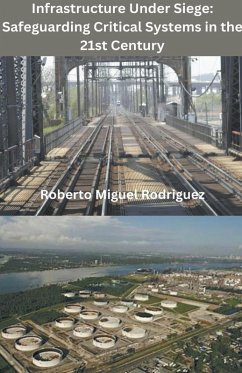As humanity progresses into the 21st century, the intricate interplay between our built environment and the phenomena of global warming has become an irrefutable reality. The phrase “Infrastructure Under Siege” encapsulates a pressing concern that extends beyond mere aesthetics or convenience. It speaks to an existential threat that jeopardizes not only the foundations of cities and towns but also the relationships humans have fostered with their surroundings. The time has come to scrutinize the ramifications of climate change as they pertain to the infrastructures that cradle our daily lives.
The nexus between global warming and infrastructure is multifaceted. Across the globe, rising temperatures are precipitating an array of environmental changes. These alterations, in turn, are eroding the resilience of buildings, roads, bridges, and other vital infrastructures. For instance, the increase in the frequency and intensity of extreme weather events such as hurricanes, floods, and heatwaves poses an unprecedented challenge. The structural integrity of bridges may be compromised when subjected to severe storms, while the thermal expansion of materials in high heat can lead to buckling roads and warped railways.
One cannot downplay the economic repercussions of this precarious situation. The deterioration of infrastructure incurs substantial repair costs, diverting financial resources that could be utilized for education, healthcare, or environmental sustainability. Moreover, insurance premiums soar in regions known to be climate-vulnerable, placing an additional burden on homeowners and businesses alike. This economic strain serves as a disincentive for necessary upgrades, perpetuating a cycle of neglect and decay.
Urbanization further complicates the dilemma. As population densities increase, cities expand into hazardous areas such as floodplains and coastal zones. Inhabitants of these regions face the dual threat of rising sea levels and storm surges, a byproduct of melting polar ice caps. The irony lies in the fact that urban centers, often portrayed as bastions of innovation and resilience, are rendered vulnerable by their own expansionist tendencies. The encroachment upon natural ecosystems compound the vulnerability of urban infrastructure; wetlands that would normally absorb excess floodwaters are replaced by impermeable surfaces, amplifying flooding risks.
The subtleties of climate change also manifest in less tangible but equally devastating manners. The gradual deterioration of ecosystems—deforestation, soil depletion, and loss of biodiversity—contributes heavily to infrastructure failures. For example, deteriorating forests, which traditionally provide natural barriers against landslides, are failing to perform their role as temperatures soar. The resultant erosion not only threatens roads and railways but also compromises water quality, resulting in further infrastructural strain as municipalities grapple with increased demand for potable water.
One might wonder about the potential for adaptation and resilience-building in the face of such daunting threats. The integration of sustainable practices into infrastructure development is now more crucial than ever. Innovations in materials science can yield products designed to withstand extreme weather conditions, while urban planning methodologies can emphasize strategic placement away from high-risk zones. Additionally, the adoption of renewable energy sources to power infrastructure can dramatically mitigate ongoing contributions to climate change.
Resilience is the key to adaptation. Smart cities are emerging from the recognition that traditional infrastructures are insufficient to counteract the realities of climate change. These cities deploy a variety of technologies, including real-time data analytics, to monitor conditions and engage in proactive maintenance. For instance, smart drainage systems can help prevent flooding by adapting to changing precipitation patterns. Similarly, climate-responsive architecture focuses on the use of passive solar techniques and sustainable materials, creating structures that not only endure but thrive amidst fluctuations in climate.
Furthermore, community involvement remains paramount. Grassroots movements often spearhead initiatives that emphasize local adaptations to climate threats. Involving citizens in decision-making processes fosters a greater sense of responsibility and investment in the preservation of one’s environment. As communities rally to protect their infrastructures, lessons emerge that can inform larger-scale strategies, creating a comprehensive approach to climate resilience.
Nevertheless, adaptation alone is insufficient. It is imperative to explore the underlying societal values that contribute to climate change. A shift in perception is necessary—infrastructure should not merely be seen as a framework for economic growth but as a fundamental component of a sustainable future. This requires reframing our understanding of progress, so that the protection of our environment is viewed as integral rather than ancillary. Public policy must also reflect this paradigm shift, with incentives tailored to reward sustainable practices across all sectors.
In summary, the threat of climate change to our built environment invokes a profound introspection of how we build, maintain, and value infrastructure. With streets and buildings increasingly under siege by the relentless forces of nature, the urgency of the situation cannot be overstated. Our current trajectory calls for immediate action—a tandem approach of resilient infrastructure design, community engagement, and a reimagining of what it means to inhabit this planet sustainably. The future of our infrastructures—and, indeed, our civilization—depends on acknowledging this intricate relationship. The time for proactive measures is now; the very fabric of our societies hangs in the balance. We must act decisively to ensure that our infrastructures can withstand not just the tests of time, but the transformative challenges posed by climate change.








